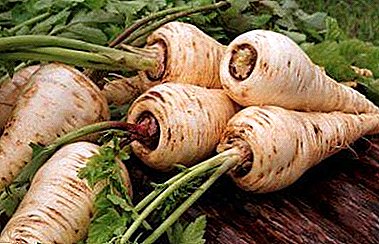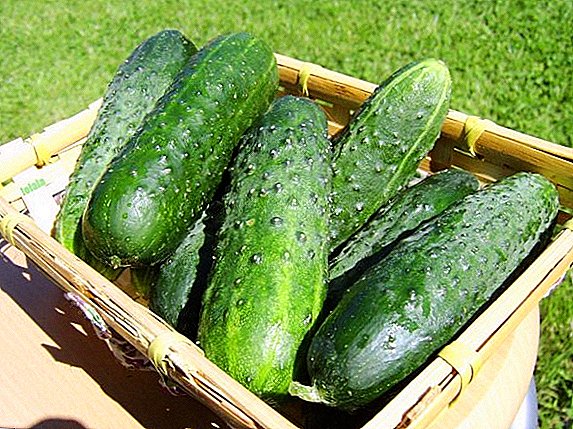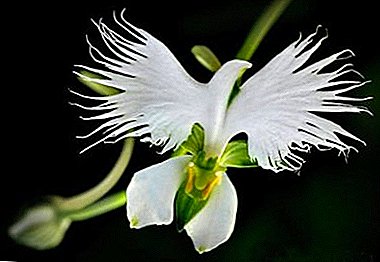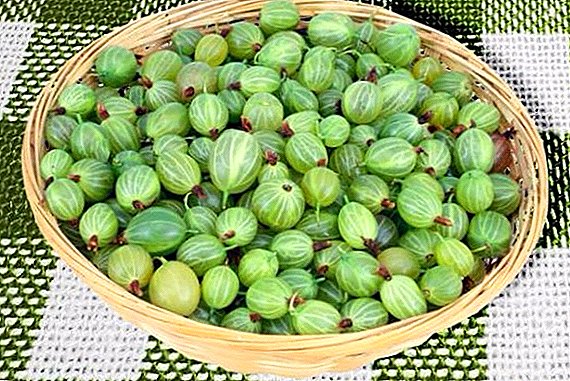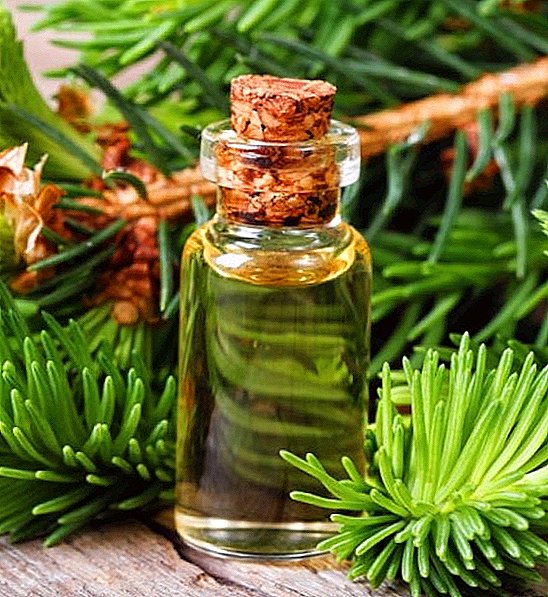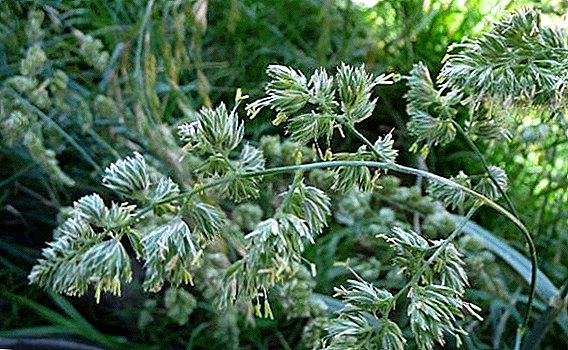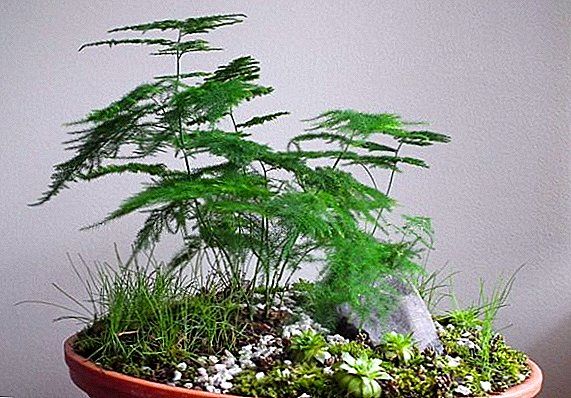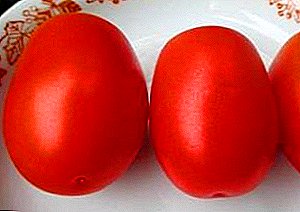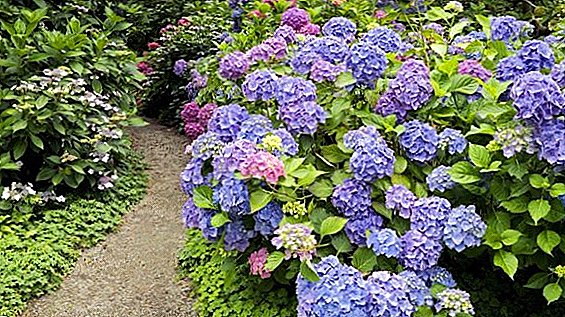 A lush hydrangea bush can decorate any cottage or window sill, but all this beauty can sometimes be spoiled by diseases. In the garden and indoor flower diseases do not practically differ, therefore, below we will study in detail how to cure hydrangea, regardless of its type and place of planting.
A lush hydrangea bush can decorate any cottage or window sill, but all this beauty can sometimes be spoiled by diseases. In the garden and indoor flower diseases do not practically differ, therefore, below we will study in detail how to cure hydrangea, regardless of its type and place of planting.
How to cure chlorosis
Garden hydrangea can be affected by many diseases, and chlorosis is one of the most ferocious. Because of this disease, the leaves of the plant become pale or turn yellow, while the veins on them darken greatly. If you do not pay attention to these symptoms in time, the plant will lose its beauty over time, since all these signs are evidence of malnutrition, in particular iron deficiency.
Therefore, wherever you plant your hydrangea, regularly feed it with special fertilizers containing iron elements. Water the flower should be soft water collected during the rain. Also, do not plant garden hydrangea in a soil enriched with lime, and try to use humus as a minimum to feed it.
But if the disease has already manifested itself, it is recommended to spray hydrangea bushes with one of the following preparations: 
- Agricol;
- Iron chelate;
- Antichlorosis;
- Ferovit;
- Ferrylene;
- Micro Fe;
- Brexil.
Gray rot: methods of struggle
Gray decay is no less dangerous for hydrangea, as the stalks and flowers struck it become very soft, watery, which eventually dies. At the same time, lesions can appear on the leaves and stems by dots, which dry up and spill out in hot weather, leaving behind them unsightly holes. If the weather is wet, then the disease will spread rapidly, and “cotton wool” will also form on top of the affected areas.
 It is very difficult to get rid of gray rot on a garden hydrangea, since this disease is common to almost all garden plants, and hydrangea can be re-infected. However, if you regularly remove and burn all the affected areas and spray the flower with “Skor”, “Chistotsvet” or “Fundazol”, then soon all the symptoms will disappear.
It is very difficult to get rid of gray rot on a garden hydrangea, since this disease is common to almost all garden plants, and hydrangea can be re-infected. However, if you regularly remove and burn all the affected areas and spray the flower with “Skor”, “Chistotsvet” or “Fundazol”, then soon all the symptoms will disappear.
Did you know? Another name for hydrangea is hydrangia. It arose due to the fact that this flower is very fond of abundant watering.
Flower cancer: how to treat a disease
This disease began to occur in the beds of hydrangea fans not so long ago, as the European flower crab arrived at our summer cottages along with imported varieties. Despite this, the cancer is quite dangerous for the hydrangea and is manifested by brown spots, under which ulcers form on the stems. The longer you do not pay attention to this disease, the more it will progress - the sores will deepen, the stems will begin to die first in places, and then completely. The result is one - hydrangea can completely dry out.
There can be a lot of reasons for the defeat of bushes with cancer: infected planting material, poor feeding, due to areas damaged by hail, when the bushes are too thick. To cope with cancer, it is necessary to apply a whole range of measures:

- At the first signs of illness, try to remove all the affected areas on the flower and burn them.
- If the cancer appeared on the roots - the bush must be completely removed and burned.
- Provide flowers with all the necessary mineral and organic elements, which will increase the resistance of hydrangeas to various diseases.
Mealy dew
When yellow-green spots appear on the leaves of the hydrangea, which over time become more and more dark and acquire clear contours, you should prepare for the fight against such a disease as powdery mildewsince all these signs are her symptoms. It is clear that such leaves will not be able to survive on the stems for a long time and will soon begin to fall off.
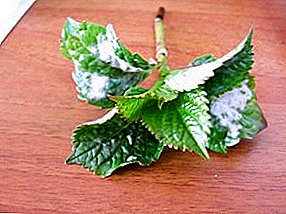 If powdery mildew fungus will strike young shoots of hydrangea, they are deformed and will not be able to develop enough to survive the next winter. At the initial stages of the development of the disease, hydrangea bushes are recommended to be sprayed with fungicides, which are represented by the preparations "Alirin-B" and "Fitosporin-M".
If powdery mildew fungus will strike young shoots of hydrangea, they are deformed and will not be able to develop enough to survive the next winter. At the initial stages of the development of the disease, hydrangea bushes are recommended to be sprayed with fungicides, which are represented by the preparations "Alirin-B" and "Fitosporin-M".
In case powdery mildew has conquered most of the plant, spraying with such preparations will help save the flower:
- Pure color;
- Tiovit Jet;
- Soon;
- Topaz;
- Strobe;
- Cumulus
Important! In no case do not touch the hydrangea inflorescences (for example, to remove flowers that have already wilted). Such an intervention can severely damage the plant, with the result that unblown inflorescences may never open.
Leaf Deformation: How to Cure Ring Spills
Ring spots, which lead to deformation of the leaves of a plant, are the most common viral disease of this flower. The disease develops gradually: at first, small lesions in the form of spots with fuzzy contours of the ring appear on the leaves of the hydrangea, then they dry them and force them to deform, making them asymmetric.
When the ring spot strongly affects the flower, it may not even bloom, or the flowering will be very weak. Unfortunately, it is impossible to get rid of this disease. The only measure that will help you prevent it is to carefully select seedlings for your flower bed.
Stem Nematode
 Among the diseases of room hydrangea, as well as her garden relative, there is also a stem nematode. The nematode is a very small worms, which develop particularly rapidly in a humid environment, affecting not only the stems, but also the roots of the plant, as well as their leaves. Under the influence of nematodes, the normal development of the plant stops, and over time it may die.
Among the diseases of room hydrangea, as well as her garden relative, there is also a stem nematode. The nematode is a very small worms, which develop particularly rapidly in a humid environment, affecting not only the stems, but also the roots of the plant, as well as their leaves. Under the influence of nematodes, the normal development of the plant stops, and over time it may die.
Since nematode larvae are very small, it is not difficult for them to wade through the roots to the stalks and flower buds, which they severely damage. This parasite is also capable of leaving behind poisonous substances that stop the growth of hydrangea shoots and cause unsightly bloating on its stems.
If your hydrangea is also struck by stem nematodes, it is recommended to destroy the plant, since it is almost impossible to cope with them, but they can quickly move to other plants, including cultivated ones. The fact is that nematodes can spread with the soil, through pots, and even with water droplets that drain from the plant after watering, and by using inventory during processing.
Important! Crohn's garden hydrangea perfectly amenable to formation. To do this, you just need to regularly trim the tops of her young shoots. Spherical bushes look especially attractive.
White sclerocial rot
 This is a fungal disease that is often found on hydrangeas. It is very difficult to cope with it, since its pathogens - sclerotia - are able to preserve their vital activity in plant residues forgotten on the ground after harvesting.
This is a fungal disease that is often found on hydrangeas. It is very difficult to cope with it, since its pathogens - sclerotia - are able to preserve their vital activity in plant residues forgotten on the ground after harvesting.
This type of rot first acts on the root system of the hydrangea, leading to its rotting and stopping the supply of nutrients to the stems of the flower, which eventually turns brown and dries out completely. At the same time, if the disease has struck young stems, they will not just begin to wither and grow brown, but they will also begin to progress to rot, over which a cotton-like patina of white color is formed. It is impossible to allow the formation of this plaque, as sclerotia will form under it, which can completely infect your entire flower garden.
Thus, it is better to immediately remove the hydrangea affected by white sclerocial rot from the flower bed, thereby stopping the development of the disease.
Prevention of hydrangea diseases
Indoor flower hydrangea loves well-moistened soil, so it needs to provide frequent watering. If you forget about hydrangea for a while, it will still be able to come to life after resuming the supply of moisture. However, it is not recommended to experiment with a flower, since it will greatly weaken it and make it susceptible to diseases.
Important! In winter, hydrangea usually sheds leaves just as all trees do. This does not mean that the plant has died, it just passed into a period of rest, after which in the spring it can develop even more magnificently.
 For normal growth of hydrangea, you should also provide a sufficient amount of light, although you should not put a pot with it on the south window. As for the temperature, in too warm a room and with abundant watering the flower can start to get rid of the leaves, besides, the first signs of downy mildew can appear on the plant. Growing up in a draft can lead to the same result.
For normal growth of hydrangea, you should also provide a sufficient amount of light, although you should not put a pot with it on the south window. As for the temperature, in too warm a room and with abundant watering the flower can start to get rid of the leaves, besides, the first signs of downy mildew can appear on the plant. Growing up in a draft can lead to the same result.
For the prevention of the above listed diseases of hydrangea, it is recommended to spray it regularly with copper sulfate solution (15 g of substance per 10 liters of water), as well as regularly transplant and trim. It is especially important to remove from the bushes the already damaged stems and leaves that need to be burned.
If you have noticed incurable diseases on hydrangeas, it is better to leave the flower forever, otherwise in the future the same problems will occur on other “favorites”. Diseases of hydrangea and their treatment will not disturb you if you regularly and correctly feed the flower, as well as find the right place on the windowsill and flower bed.


